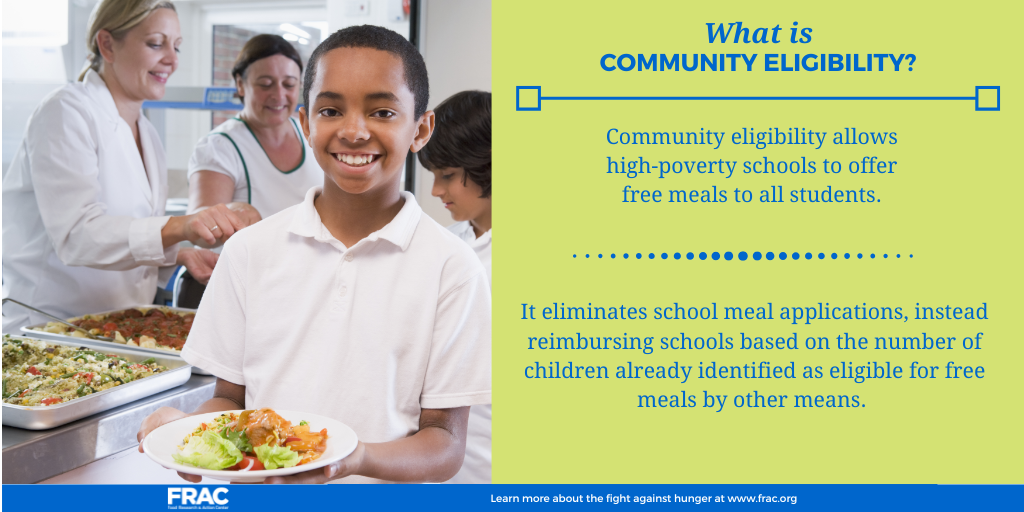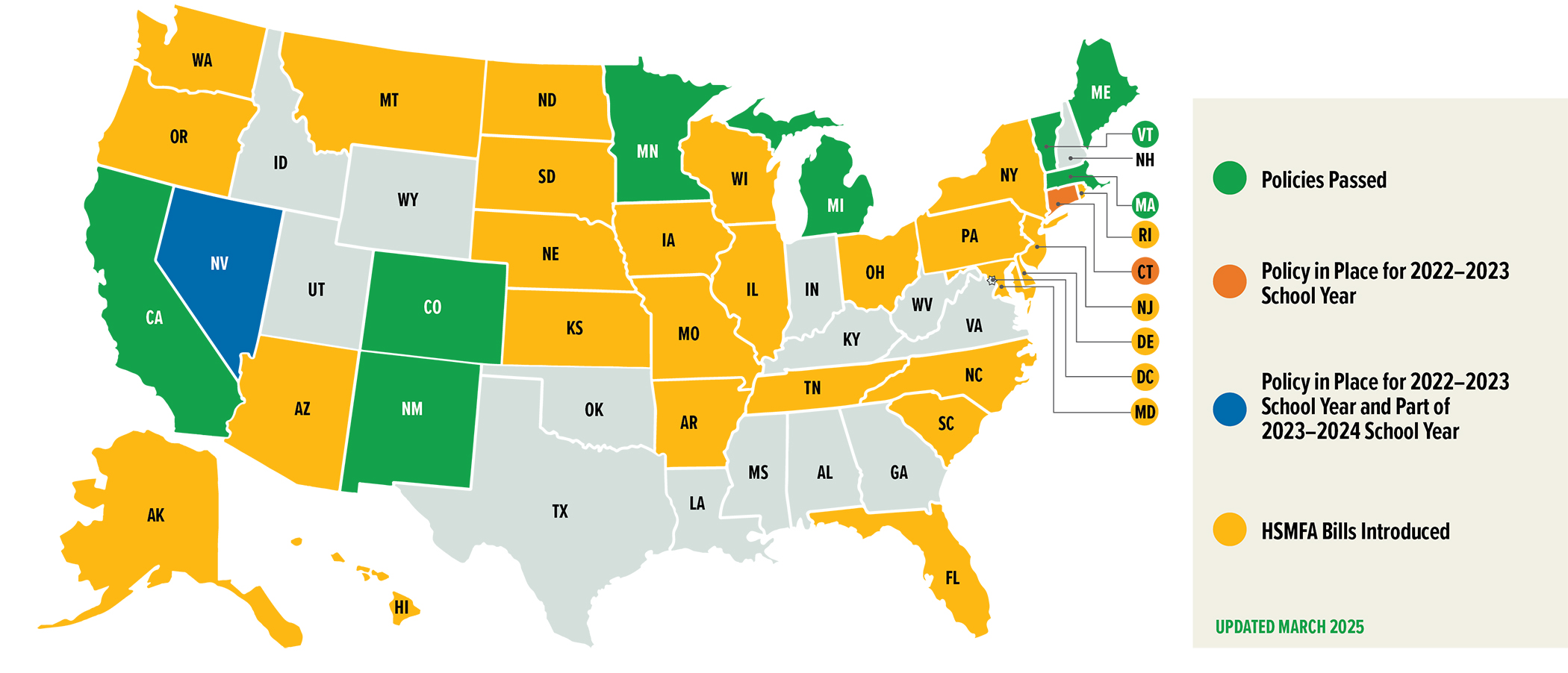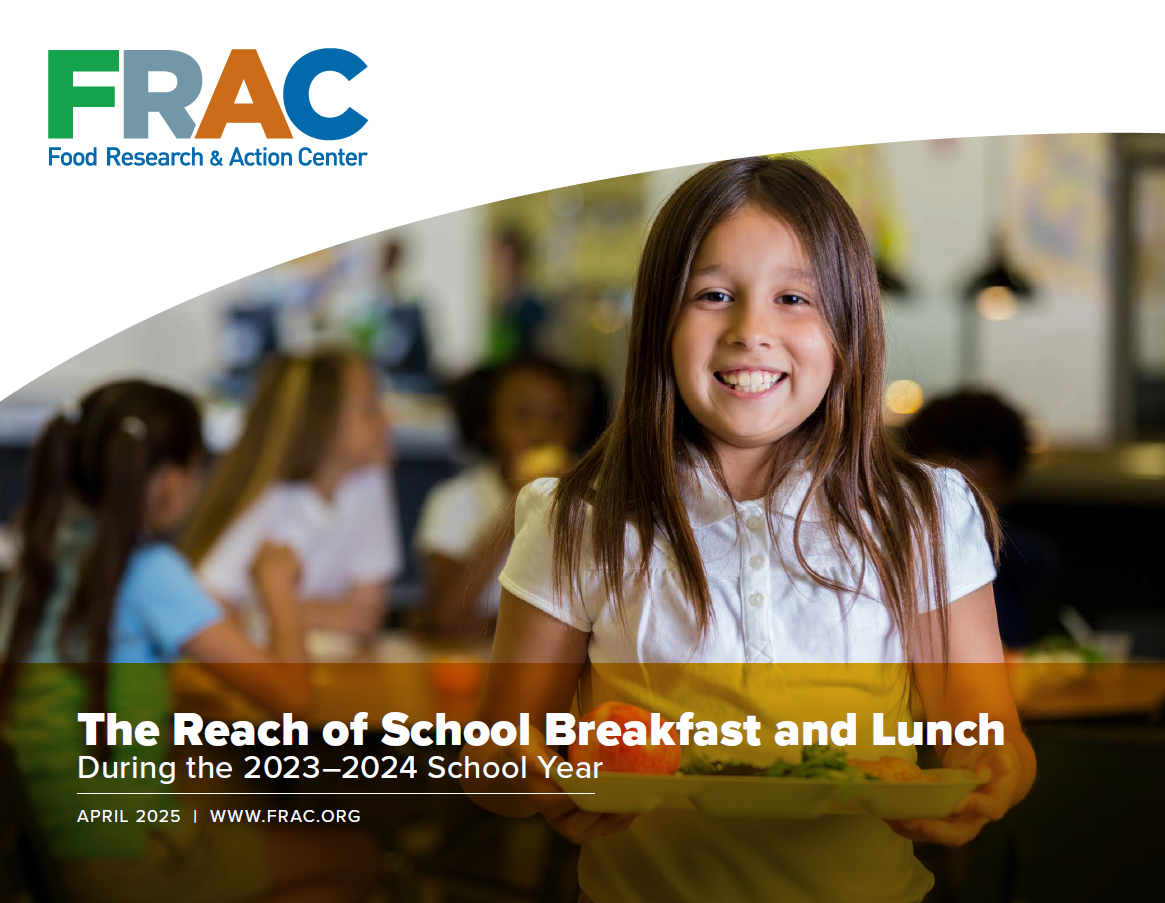Key Findings

School Breakfast
- Nearly 15.4 million children participated in school breakfast
- Over 12.2 million children received a free or reduced-price breakfast
- Increase over last year: more than 900,000 children (8 percent)
School Lunch
- Nearly 29.4 million children participated in school lunch
- 21.1 million children received a free or reduced-price lunch
- Increase over last year: more than 1.3 million children (6.8 percent)
The 2023–2024 school year provides an important blueprint on how to increase access to school meals moving forward. Much of the school year’s growth in participation can be attributed to the increase in the number of schools offering free meals to all students through the Community Eligibility Provision and state Healthy School Meals for All policies.
Maximizing Momentum: Increasing Access to School Breakfast and Lunch

The data is clear: More students participate in school breakfast and school lunch when meals are available at no charge. Additional investments in these strategies — combined with support for innovative breakfast models — will ensure the programs continue to grow to meet the need.
Expanding Healthy School Meals for All
- Federal LegislationEnacting federal legislation is the most effective way to make free school meals accessible to all students throughout the country. Congress should pass legislation that would make Healthy School Meals for All a reality nationwide.
- State LegislationMuch of the momentum toward Healthy School Meals for All is on the state level. Eight states have passed permanent legislation, and over 20 states have introduced legislation.
- Maximizing CEPMaximizing participation in CEP remains an important strategy for Healthy School Meals for All for schools and states.
- Certification Process Improvements and ExpansionIncreasing the number of children from households with low incomes who are directly certified to receive free school meals without an application – for example, via Medicaid Direct Certification – would ensure more eligible children do not fall through the cracks.
The State of Healthy School Meals for All

Currently, eight states have passed policies to make school meals available to all students at no charge, regardless of household income:
- California,
- Colorado,
- Maine,
- Massachusetts,
- Michigan,
- Minnesota,
- New Mexico, and
- Vermont
Similar legislation has been introduced in more than 20 other states.

The State of Healthy School Meals for All: Eight States Show the Nation What Is Possible
Key Findings
- Three Healthy School Meals for All (HSMFA) states – California, Maine, and Massachusetts – that first implemented during the 2022–2023 school year – saw increases in both school breakfast and lunch participation in 2023–2024, compared to the previous year.
- The four HSMFA states – Colorado, Michigan, Minnesota, and New Mexico – that implemented during the 2023–2024 school year all saw increases in both breakfast and lunch participation, compared to the previous year, when many schools went back to determining student eligibility for free, reduced-price, and paid meals.
- All eight states continued to have a gap between breakfast and lunch participation, showing there is still room for growth in the School Breakfast Program.
Learn more in FRAC’s report, The State of Healthy School Meals for All: Eight States Show the Nation What Is Possible.
Methodology
The Reach of School Breakfast and Lunch During the 2023 – 2024 School Year measures the reach of breakfast and lunch in the 2023–2024 school year from September through May — nationally and in each state — based on a variety of metrics and examines the impact of select trends and policies on program participation. The report compares breakfast and lunch participation in 2023–2024 to 2022–2023.

The Reach of School Breakfast and Lunch During the 2023–2024 School Year
Read the Report
The Reach of School Breakfast and Lunch During the 2022–2023 School Year
Read Last Year's Report
Learn More About the Push for Healthy School Meals for All On www.FreeSchoolMealsforAll.org
Learn More
Communications Toolkit
Explore the Toolkit
